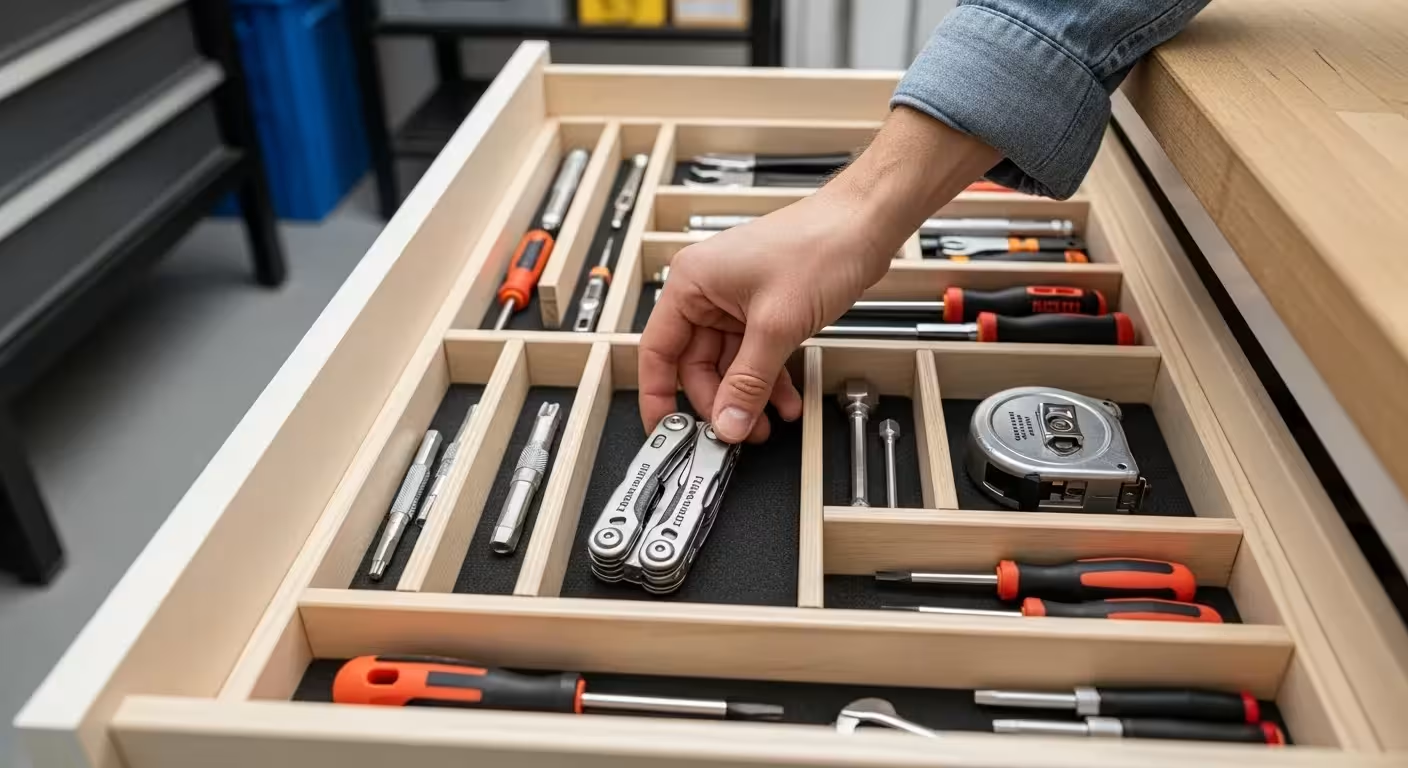
What Belongs in a Junk Drawer? Defining Its Purpose
With your “Keep” pile sitting on the counter, you’ve already won half the battle. This small, curated collection is the foundation of your new, functional utility drawer. The question now is, what truly earns a spot in this valuable, easy-access space? The answer lies in frequency and immediacy. The items in this drawer should be things you reach for often or need in a pinch.
We are officially renaming your “junk drawer” the “utility drawer” or “action station.” This simple mindset shift helps reinforce its new purpose. It’s no longer a dumping ground; it’s a command center for small, everyday tasks. While the exact contents will vary based on your life and your home’s layout, a great utility drawer generally contains items from the following categories:
1. Simple Tools: This isn’t for your entire toolbox. It’s for the quick fixes.
Examples: A multi-bit screwdriver, a small hammer, a 16-foot tape measure, a pair of pliers, a box cutter or utility knife, and a small roll of duct tape or packing tape.
2. Writing & Marking: For jotting a quick note or labeling a container.
Examples: Two or three reliable ballpoint pens (not ten!), one permanent marker, and one highlighter.
3. Fasteners & Adhesives: A small, controlled collection for temporary needs.
Examples: A small handful of paper clips and binder clips, a few rubber bands, a book of matches or a lighter, a small roll of Scotch tape, and a few adhesive wall hooks.
4. Light & Power: For power outages or quick checks in dark corners.
Examples: A small, powerful LED flashlight, and a few spare batteries in the sizes you use most (typically AA and AAA). Store batteries in their original packaging or in a designated battery case to prevent them from touching and draining power.
5. Mail & Packages: Items to process incoming and outgoing mail.
Examples: A letter opener or a pair of sharp scissors, and a book of stamps.
6. Miniature First Aid: For very minor scrapes. This doesn’t replace your main first-aid kit.
Examples: A few adhesive bandages in various sizes and a single-use antiseptic wipe.
The key here is moderation. You need a screwdriver, not six. You need a few batteries, not a 48-pack. Everything else—the bulk supplies, the specialty tools, the craft items—belongs in a more appropriate “home” elsewhere. For example, the rest of your batteries can live in a labeled box in a cool, dry closet. The rest of your office supplies can live in a desk drawer. By keeping only the essentials in your utility drawer, you ensure that you can always find what you’re looking for without digging.
Look at your “Keep” pile one last time. Does every item fit into one of these high-frequency, high-utility categories? If you find something that doesn’t, like a sewing kit you use once a year, it’s a sign that it belongs in the “Relocate” box. Be firm with your boundaries. This drawer is for the everyday, the immediate, the essential.

















